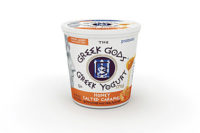Cheese usage today falls into three categories — industrial, retail and foodservice.
The industrial channel consists of cheese that is shipped to a facility for use as an ingredient in prepared food products, including frozen pizza, mac & cheese, soups, sauces, cheesecake, pastries and more.
Retail consists of packaged cheese sold to consumers in stores. Foodservice channels consist of cheese shipped to restaurants, cafeterias and other foodservice outlets for use in dishes for immediate consumption.
According to statistics collected by the Wisconsin Milk Marketing Board, more than 25% of all cheese consumed in the United States goes towards industrial cheese usage. That is an estimated 2.6 billion pounds of cheese used in food products.
Industrial and foodservice cheese usage has been a growing area for both natural and processed cheese, but natural cheese in particular has seen a tremendous rise in usage as an ingredient cheese. In fact, from 2009 to 2013, U.S. volume sales of natural cheese grew by more than 50 million pounds and in 2012 it was estimated that 70% of all cheese used in processing channels was natural. The key varieties involved in this sector include Cheddar, mozzarella, cream cheese and hard Italian cheeses.
This trend towards natural cheese usage is in part due to the growth of pizza and related industries. Case in point: mozzarella, which is often used on pizzas, led natural cheese usage in 2012 at 836 million pounds. This trend is also due in part to the new technologies and research efforts surrounding natural cheese.
Controlling the melt
The Center for Dairy Research, for example, is actively working with companies to better control the melting properties of natural cheeses. Controlling the melt of natural cheeses is often a hurdle for many companies looking to use natural cheese in an application. In addition to melt, nutrition has also become a major focus for the industry. Lowering the calories and sodium in food products continues to be an area of interest, so finding a way to do this without compromising the quality, functionality and taste of the natural cheese will continue to be a major area of discussion and research.
As natural cheese has grown in popularity, unique cheeses, such as Hispanic (Latin American) cheeses have also grown. In 2013 the retail market share for Hispanic cheeses was 1.8% but they have a compound annual growth rate of over 5%. This growth is likely due in part to the increased awareness surrounding these cheeses.
In regards to cheese as an ingredient, Hispanic cheeses offer three distinct varieties. The first category of fresh cheeses, which includes queso blanco, can be used in applications that require very little melt. These cheeses are produced with little acid so they will not melt when exposed to heat. Another category includes cheeses such as queso Chihuahua which offers excellent melt and flow properties. Finally, hard cheeses such as queso duro can be crumbled on top of dishes.
Since this category of cheese offers so many options for use in foods, it’s easy to see why it has grown in popularity throughout the United States. Wisconsin produces around 65 million pounds of Hispanic cheese types. Hispanic cheeses are often used in foodservice but have good growth potential for industrial food processing with their diverse flavors/textures.
The United States is also concentrating on the expanding export market. According to the United States Dairy Export Council, this country had a record-setting 2013, becoming the No. 1 exporter of cheese in the world with over 680 million pounds.
Mozzarella, Gouda for export
Pizza cheese is a major contributor to this growing market. With so many distinct regional pizza preferences, U.S. cheesemakers and CDR have been hard at work developing cheeses that will meet the needs of export markets such as China and Korea. Gouda has become another popular export cheese. Given its chemical composition, however, Gouda can be hard to transport and then process for use in a dish or convert it for use as a food ingredient. With that in mind, CDR worked with U.S. cheese manufacturers to develop a bulk-format Gouda that would be suitable for export but still maintain the desirable flavor and texture qualities of a more traditional Gouda. Currently, of the total amount of U.S. cheese used for food processing, only about 3% is used in food products for export.
New technology and research has allowed the United States to expand this industrial cheese market and develop products that not only meet the needs of U.S. consumers but those in growing export markets such as Asia and Latin America.
Cheese has been recognized for millennia as a delicious ingredient in many foods providing creamy melt, unique flavors and great nutrition. New innovations in flavors and texture performance will continue the growth of cheese used for food processing well into the future.



